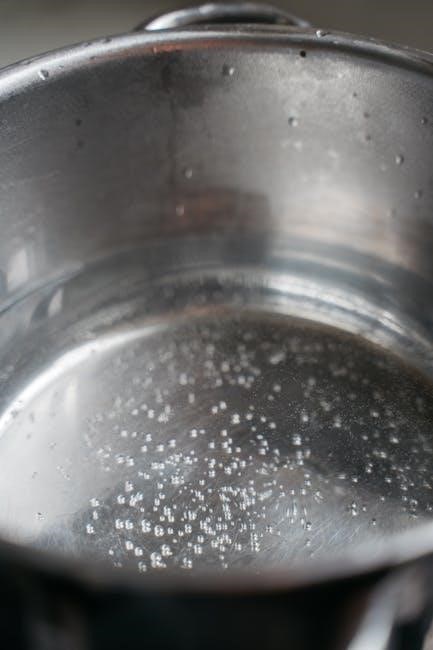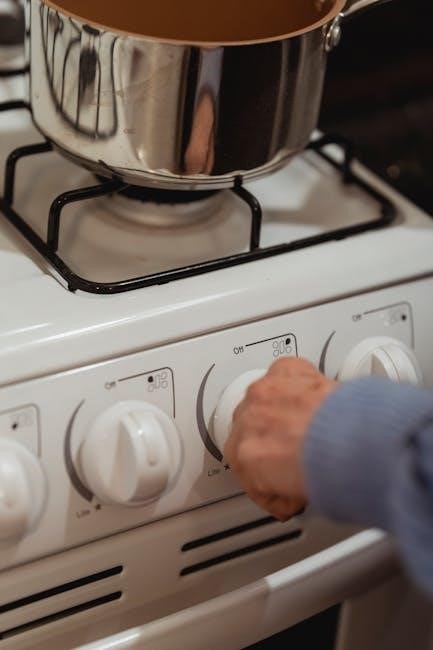Boiling a mouthpiece ensures a snug fit by softening the material. Submerge it in boiling water, then bite down to shape it for maximum comfort and protection.
Understanding the Importance of Proper Fit
A proper fit is crucial for both comfort and protection. A mouthpiece that fits correctly ensures maximum protection during sports or activities, reducing the risk of dental injuries. If the mouthpiece is too loose, it may not stay in place, while a too-tight fit can cause discomfort or even cut into the gums. Proper fit also ensures the mouthpiece remains stable, allowing for clear speech and breathing. Improperly fitted mouthpieces can shift during use, reducing their effectiveness. Achieving the right fit involves softening the material through boiling and shaping it to match the unique contours of your mouth. This process ensures the mouthpiece provides optimal protection without compromising comfort. By following the boiling and shaping instructions carefully, you can achieve a custom-like fit tailored to your needs.
Overview of the Boiling Process
The boiling process is a simple yet critical step in customizing your mouthpiece. It involves submerging the mouthpiece in boiling water to soften the material, making it pliable and easy to shape. The water should be brought to a gentle boil, and the mouthpiece should be submerged for a specific duration, typically between 30 to 60 seconds, depending on the model. After boiling, the mouthpiece is placed in the mouth, and the user bites down gently to mold it to their dental structure. This process ensures a snug and comfortable fit. Proper boiling time is essential; overheating can cause the mouthpiece to become too soft and lose its shape, while underheating may not soften it enough for proper molding. Always follow the manufacturer’s guidelines for boiling time to achieve the best results. This step is crucial for the mouthpiece to provide effective protection and comfort during use.


Preparing the Mouthpiece for Boiling
Clean and rinse the mouthpiece thoroughly before boiling to ensure optimal results and a hygienic process. Remove any packaging and prepare according to manufacturer instructions.
Materials Needed for the Process
To properly prepare your mouthpiece for boiling, you’ll need a few essential materials. Start with a medium-sized pot to boil water, ensuring it’s large enough to fully submerge the mouthpiece. A pair of tongs or a slotted spoon is necessary for safely handling the mouthpiece once it’s hot. A clean, heat-resistant container filled with cold water will be needed to cool the mouthpiece after boiling. Additionally, a clean, dry cloth or paper towels are useful for drying the mouthpiece before and after the process. Finally, ensure you have the manufacturer’s instructions handy for specific guidance. Gather all materials beforehand to streamline the process and avoid delays. Proper preparation ensures safety and effectiveness when shaping your mouthpiece for a perfect fit;
Cleaning the Mouthpiece Before Boiling
Cleaning the mouthpiece before boiling is crucial for hygiene and effectiveness. Start by rinsing it under warm water to remove any surface debris. Use a soft toothbrush to gently scrub away any stubborn particles or plaque. For deeper cleaning, mix a solution of mild soap and warm water, and soak the mouthpiece for about 10 minutes. Avoid using harsh chemicals or abrasive cleaners, as they may damage the material. After soaking, rinse thoroughly with clean water to ensure no soap residue remains. A clean mouthpiece ensures proper adhesion when molding and helps prevent any bacterial growth. This step is essential before proceeding to boil and shape your mouthpiece for a comfortable, custom fit.

Boiling the Mouthpiece
Boiling the mouthpiece softens it for shaping. Submerge in boiling water, let it stand for 30 seconds, then carefully remove and prepare for molding.
Heating Water to the Correct Temperature
Heating water to the correct temperature is crucial for properly boiling the mouthpiece. Begin by filling a pot with enough water to fully submerge the mouthpiece. Place the pot on a stove and turn the heat to high. Bring the water to a rolling boil, ensuring it reaches a temperature of 100°C (212°F) for optimal softening of the mouthpiece material. Be cautious not to let the water overflow or boil too vigorously, as this could cause hot water to splash. Once boiling, reduce the heat slightly to maintain a steady simmer. Allow the water to stand for about 30 seconds before submerging the mouthpiece to ensure even heating. Properly heating the water ensures the mouthpiece softens uniformly, making it easier to shape and fit comfortably in your mouth.
Submerging the Mouthpiece in Boiling Water
Submerging the mouthpiece in boiling water is a critical step in the boiling process. Once the water has reached a rolling boil, carefully place the mouthpiece into the water using tongs or a similar tool to avoid direct contact with the hot water. Ensure the mouthpiece is fully submerged to allow even softening of the material. Depending on the model, submerge the mouthpiece for 30 to 60 seconds, but do not exceed the recommended time to prevent excessive shrinkage or damage. After submerging, remove the mouthpiece from the water and proceed to shape it while it is still warm and pliable. This step ensures the mouthpiece is ready to conform to your mouth’s shape for a secure and comfortable fit.

Shaping the Mouthpiece
Place the mouthpiece in your mouth, align it with your teeth, and bite down firmly for 20 seconds to shape it for a snug proper fit.

Placing the Mouthpiece in Your Mouth
Once the mouthpiece is soft and pliable from boiling, carefully place it into your mouth, ensuring it aligns with your upper teeth. Gently position it so it covers your teeth and gums evenly. The mouthpiece should feel snug but not uncomfortable. Hold it in place with your fingers, making sure it is centered and not twisted. Take a moment to ensure proper alignment before proceeding to the next step. The heat from the boiling water will make the material moldable, allowing it to conform to your mouth’s shape. Keep the mouthpiece in your mouth for a few seconds to start the molding process. Once removed, it will retain the shape of your teeth and gums, providing a custom fit for comfort and protection.
Biting Down to Achieve the Perfect Fit
After placing the mouthpiece in your mouth, gently bite down on it for 20-30 seconds to mold it to your teeth and gums. Apply even pressure to ensure the material conforms to the shape of your mouth. Avoid biting too hard, as this could cause distortion. You may feel the mouthpiece begin to harden as it cools slightly in your mouth. This step is crucial for achieving a snug, customized fit that provides maximum comfort and protection. Use a mirror to check the alignment and make any necessary adjustments while the material is still slightly soft. Proper biting ensures the mouthpiece stays in place during activities, offering reliable protection for your teeth and gums. The fit should feel natural and secure once the process is complete.

Cooling the Mouthpiece
This ensures the mouthpiece cools slightly after boiling to ensure the proper fit and avoid burns. Letting it set briefly helps maintain its shape for proper comfort.
Allowing the Mouthpiece to Cool Down
After boiling, it’s crucial to let the mouthpiece cool slightly to avoid burns. Remove it from the water with a spoon and place it on a clean surface. Letting it cool for about 10-15 seconds ensures it’s still pliable but not too hot. This step is essential for comfort and safety when shaping the mouthpiece. Proper cooling helps maintain the integrity of the material, preventing it from becoming too rigid or misshapen. Once cooled enough, proceed to place it in your mouth to achieve the perfect fit. This balance between heat and cooling ensures maximum comfort and protection for your teeth and gums.
Final Adjustments for Comfort
Once the mouthpiece has cooled enough to handle, carefully place it back in your mouth to check the fit. Gently bite down to ensure it sits comfortably and securely. If needed, use your fingers to press the material snugly around your teeth for a tighter fit. Any excess material that doesn’t mold to your mouth can be carefully trimmed with scissors. Ensure the mouthpiece doesn’t press uncomfortably on your gums or cause difficulty breathing or speaking. If adjustments are still needed, repeat the process, but be cautious not to overheat the mouthpiece. Properly fitted, it should provide excellent protection and comfort during use. These final tweaks ensure long-lasting durability and optimal performance for your specific needs.
Properly boiling and shaping your mouthpiece ensures a perfect fit and lasting protection. Regular cleaning and proper storage will extend its durability and performance for optimal results.
Importance of Following Instructions
Adhering to the provided guidelines ensures a proper fit and longevity of the mouthpiece. Improper boiling or shaping can lead to discomfort, reduced protection, or even damage to the device.
Following instructions helps maintain the mouthpiece’s integrity, ensuring it provides the necessary support and protection during activities. Deviating from recommended steps may result in a poorly fitted mouthpiece.
Additionally, proper care and maintenance, as outlined, prevent bacterial growth and extend the lifespan of the mouthpiece. Always refer to the manufacturer’s guidelines for optimal results and safety.
By carefully following each step, you can achieve a customized fit that enhances comfort and performance, making the mouthpiece a reliable and durable accessory for your needs.
Tips for Long-Term Maintenance
Regular cleaning with mild soap and water helps prevent bacterial buildup. Store the mouthpiece in a protective case to avoid damage or deformation when not in use.
Avoid exposure to extreme temperatures, as this can alter the shape or integrity of the material; Inspect the mouthpiece periodically for signs of wear or damage.
For optimal hygiene, rinse the mouthpiece with cool water after each use. Replace it as recommended by the manufacturer or if it shows significant wear.
These simple maintenance steps ensure the mouthpiece remains comfortable, functional, and durable over time. Proper care extends its lifespan and maintains its protective qualities.